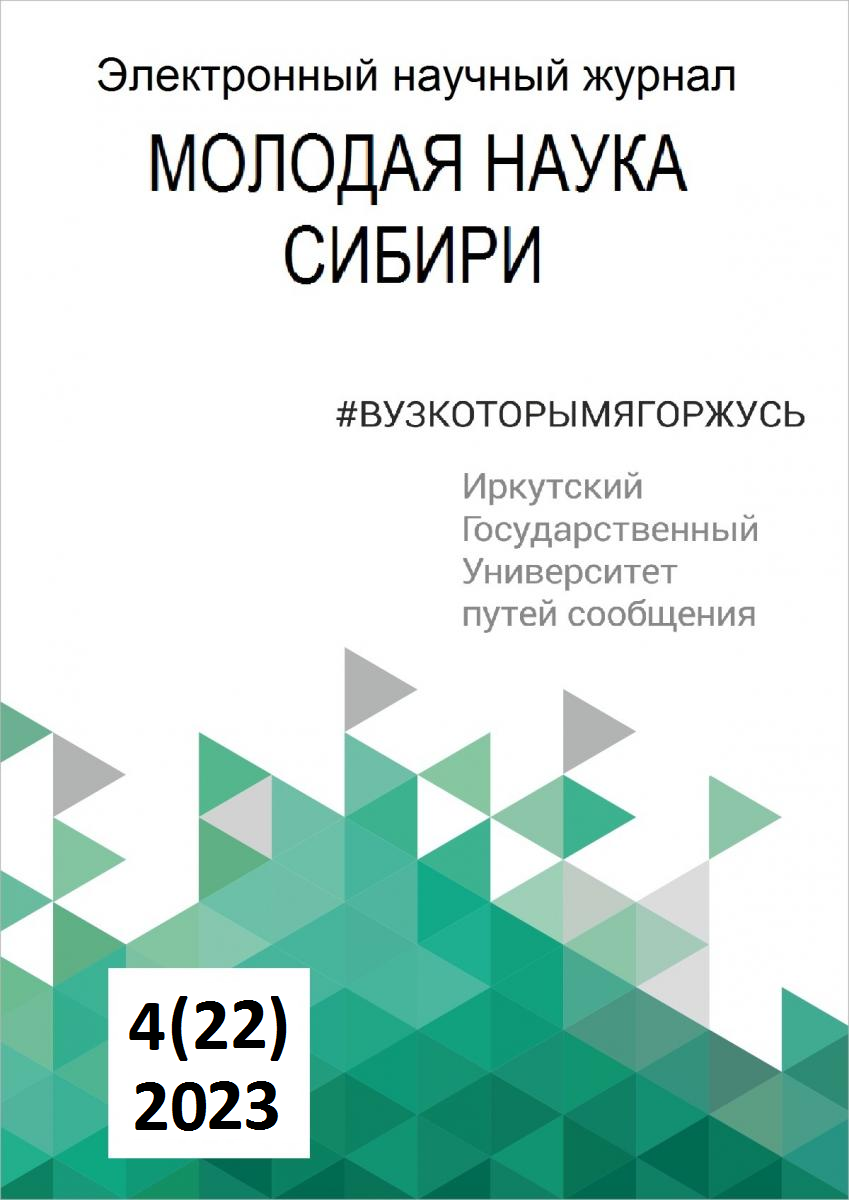INCREASING THE EFFICIENCY OF OPERATION OF ELECTRIC ROLLING STOCK ON THE BASIS OF ADJUSTING ENERGY-SAVING TRAIN SCHEDULES ACCORDING TO THESE MEASUREMENTS
Keywords:
electric rolling stock, autopilot, digital railway, energy-optimal path, train sheetAbstract
The relevance of the work lies in the search for new methods and means for finding optimal traffic schedules based on real measurements and changing the inter-train interval in accordance with the digital transformation strategies of Russian Railways. The paper searches for the optimal traffic schedule by shifting the departure time of trains by 3, 6 and 9 minutes, respectively. The analysis of scientific papers in the field of increasing the throughput capacity of the section and adjusting train schedules has been carried out. The possibilities for shifting the departure of trains by the corresponding interval (3, 6 and 9 minutes) are substantiated, which made it possible to reduce the peak value of the currents between the substations Smaznevo - Tyagun, Tyagun - Artyshta 2. The shift of the departure was reflected in the decrease in the specific consumption of electricity in the studied sections. The possibility of reducing the inter-train interval from 10 to 9 minutes is substantiated, which will positively affect the increase in the throughput of the section. Throughput increased from 140 pairs of trains to 155 pairs of trains per day. In conclusion, the implementation of building an optimal traffic schedule based on the displacement of train departures is presented, which made it possible to reduce the specific energy consumption.
References
Долгосрочная программа развития открытого акционерного общества «Российские железные дороги» № 466р. Утв. Указом Президента Российской Федерации от 07.05.2018. / Правительство Российской Федерации. М., 2019. 135 с.
О национальных целях и стратегических задачах развития Российской Федерации на период до 2024 года № 466р. Утв. Указом Президента Российской Федерации от 07.05.2018. / Президент Российской Федерации. М., 2018. 19 с.
Концепция реализации комплексного научно технического проекта «Цифровая железная дорога» № 1285р. Утв. распоряжением ОАО «РЖД» от 05.12.2017. / ОАО «РЖД». М., 2017. 92
Баранов, Л.А. Автоматизированные системы управления электроподвижным составом : учебник в 3 ч. Ч. 1. Теория автоматического управления / Л.А. Баранов, А.Н. Савоськин, О.Е. Пудовиков и др.; под ред. Л.А. Баранова и А.Н. Савоськина. – Москва, 2014. 400 с.
Баранов, Л.А. Микропроцессорные системы автоведения подвижного состава / Л.А. Баранов, Я.М. Головичер, Е.В. Ерофеев, В.М. Максимов; под ред. Л.А. Баранова. – М.: Транспорт, 1990. 272 с.
Бушуев С. В. Пути повышения провозной способности участков железных дорог / С.В. Бушуев // Эксплуатация транспортных систем. – 2022. – №4. 343c.
Баранов, Л.А. Оптимизация управления движением поездов : учеб. пособие / Л.А. Баранов, Е.В. Ерофеев, И.С. Мелешин, Л.М. Чинь; под ред. д.т.н., проф. Л.А. Баранова. – Москва. МИИТ, 2001.164 с.
Курбасов А. С. Увеличение скоростей на железных дорогах России: возможности и преимущества / А. С. Курбасов. // Транспорт российской федерации. – 2011. – №6. 20с.
Мугинштейн, Л.А., Лисицын А.Л. Нестационарные режимы тяги (Сцепление. Критическая норма массы поезда). – Момсква: Интекст, 1996.
с.
Benedikt Eberhardinger; Wolfgang Reif; Franz Wotawa; Tom Holvoet. Quality Assurance for Self-Adaptive, Self-Organising Systems (Message from the Workshop Organisers). 2014 IEEE Eighth International Conference on Self-Adaptive and Self-Organizing Systems Workshops. DOI: 10.1109/SASOW.2014.30
Guojian Cheng; Tianshi Liu; Xiaoxiao Wang; Quanzhou Huang. Rapid Training for Self-Organizing Neural Networks with Incremental. 2006. Sixth International Conference on Intelligent Systems Design and Applications. DOI: 10.1109/ISDA.2006.222
Y. Kawauchi; M. Inaba; T. Fukuda. Self-organizing intelligence for cellular robotic system 'CEBOT' with genetic knowledge production algorithm. Proceedings 1992 IEEE International Conference on Robotics and Automation. DOI: 10.1109/ROBOT.1992.220269.
Thomas B. Sheridan. Adaptive Automation, Level of Automation, Allocation Authority, Supervisory Control, and Adaptive Control: Distinctions and Modes of Adaptation. 2011. IEEE Transactions on Systems, Man, and Cybernetics - Part A: Systems and Humans. DOI: 10.1109/TSMCA.2010.2093888
Scheepmaker, G.M., Pudney, P.J., Albrecht, A.R., Goverde, R.M.P., Howlett, P.G. Optimal running time supplement distribution in train schedules for energy-efficient train control. (2020) Journal of Rail Transport Planning and Management, 14, статья № 100180. DOI:10.1016/j.jrtpm.2020.100180.
Phalgun Madhusudan; DB Rathankumar; K Aishwarya; G S Anitha. Computationally Efficient Algorithms and High-Speed ASIC design for Railway Gate Automation. 2018 Second International Conference on Computing Methodologies and Communication (ICCMC). DOI: 10.1109/ICCMC.2018.8488089.


